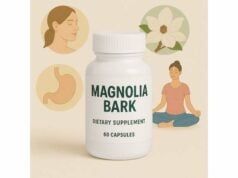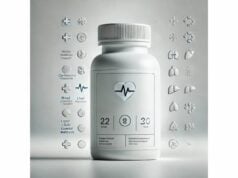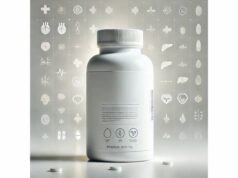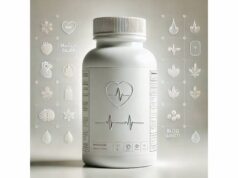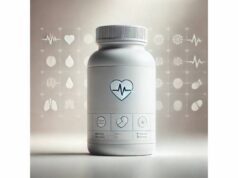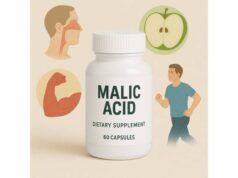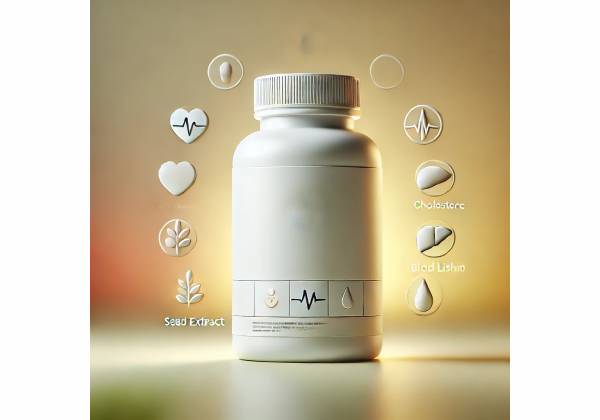
Mango seed extract (MSE) is a concentrated preparation from the inner kernel of the mango stone—a byproduct usually discarded during fruit processing. Unlike the fruit pulp and peel, the seed kernel is especially rich in gallic acid, gallotannins, catechins, and smaller amounts of mangiferin. These polyphenols give MSE broad antioxidant capacity and make it of interest for skin health, antimicrobial support, and sustainable nutrition. Early research also highlights mango kernel oil—solid at room temperature with a cocoa-butter-like profile—for food and cosmetic applications. In human settings, evidence remains preliminary, so expectations should be realistic: benefits tend to be modest, context-dependent, and formulation-specific. Still, if you are exploring plant polyphenols for topical care, food fortification, or careful self-experimentation under medical guidance, MSE offers a resource-efficient, waste-reducing option. This guide explains what MSE is, how it may work, where it helps, how to use it responsibly, and what to avoid.
Quick Overview
- Polyphenol-rich extract from mango kernels; notable for gallic acid, gallotannins, catechins, and trace mangiferin.
- Potential uses: antioxidant and anti-inflammatory support, cosmetic anti-aging (in vitro), and antimicrobial activity against gram-positive bacteria.
- Typical oral exploratory ranges in supplements: 100–300 mg/day for 4–8 weeks; topical preparations: 0.5–2% extract in leave-on products (patch test first).
- Safety: generally well tolerated short-term; watch for gastrointestinal upset and allergy in individuals sensitive to mango or related plants.
- Avoid in pregnancy or breastfeeding and use caution with anticoagulants or glucose-lowering medications until more human data exist.
Table of Contents
- What is mango seed extract?
- Does it work? Benefits and limitations
- Dosage and forms: how to take it
- How to use it for common goals
- Safety, side effects, and who should avoid
- Evidence and research summary
What is mango seed extract?
Mango seed extract (MSE) comes from the kernel inside the hard mango stone. In processing plants, seeds are a major waste stream; valorizing the kernel converts waste into functional ingredients for foods, nutraceuticals, and cosmetics. Chemically, the kernel is dense in phenolics—especially gallic acid, methyl and ethyl gallates, gallotannins, catechins, and smaller amounts of mangiferin and flavonoids like rutin. These compounds act both as direct antioxidants and as cell-signaling molecules that modulate enzymes related to inflammation, collagen breakdown, and microbial defense.
Two distinct materials are often discussed:
- Mango seed extract (polyphenol fraction): Obtained with water, ethanol, or hydro-ethanolic solvents and standardized to phenolics (for example, “≥30% total phenolics as gallic acid equivalents”). This is what most laboratory studies use for antioxidant, anti-inflammatory, skin-aging, and antimicrobial outcomes.
- Mango kernel oil (MKO): A fat fraction (roughly 12–15% of the kernel by weight) that is solid at room temperature, with a triglyceride profile rich in stearic, palmitic, and oleic acids. Its melting profile (≈32–36 °C) resembles cocoa butter, making it useful in confectionery and topical products. MKO carries minor phenolics and natural antioxidants that help resist oxidation.
Because “mango seed extract” is not a single chemical, results depend on:
- Extraction solvent and ratio: Hydro-ethanolic extracts tend to deliver higher phenolics (and darker color), while water extracts are gentler but less concentrated.
- Standardization target: Some products specify “total phenolics,” others specify gallic acid or catechin content; a few highlight mangiferin even though kernel levels are usually lower than peel or leaf.
- Delivery format: Capsules and powders target oral use; cosmetic serums, creams, and balms use MKO or polyphenol concentrates in the oil or water phase.
Real-world implications:
- If your interest is skin care or antimicrobial support, focus on polyphenol-standardized MSE for topical or oral trials.
- If you want food or cosmetic texture plus oxidative stability, MKO behaves like a plant butter with a clean label and trans-fat-free profile.
- For metabolic or cardiovascular claims, current evidence is early and comes mostly from preclinical or small exploratory work; mango leaf and purified mangiferin have stronger human data than seed extracts at this time.
Does it work? Benefits and limitations
Antioxidant and inflammation balance
Kernel extracts show robust free-radical scavenging in standard assays (DPPH, ABTS) and reduce lipid peroxidation in cell models. In macrophage and fibroblast systems, MSE has suppressed nitric oxide overproduction and downregulated matrix-degrading enzymes (MMP-2 and MMP-9) associated with wrinkle formation and tissue breakdown. These effects are plausibly driven by high gallic acid and gallotannin content. While this mechanistic profile explains interest in cosmetic anti-aging and recovery from oxidative stress, translation to durable changes in human skin requires controlled clinical studies that are not yet widely available.
Skin health and cosmetic potential
In vitro, hydro-ethanolic mango kernel extracts have demonstrated anti-tyrosinase (pigmentation pathway) and anti-hyaluronidase activity (linked to dermal hydration), plus protection against DNA damage in human fibroblast lines without overt cytotoxicity at practical concentrations. For topical use, these activities support brightening, elasticity support, and barrier care claims when appropriately formulated. In consumer practice, products typically incorporate 0.5–2% extract in the water phase or 3–10% mango kernel oil in the oil phase alongside emollients. Patch testing is recommended because polyphenols and residual solvents can irritate sensitive skin.
Antimicrobial properties
Ethanolic extracts from mango seed kernels have inhibited gram-positive bacteria such as Staphylococcus aureus and Bacillus cereus in disc-diffusion assays, sometimes matching reference antibiotics for zone size in laboratory conditions. Activity against gram-negative organisms (e.g., E. coli, Klebsiella) is weaker or variable, likely due to different cell wall structures. For practical use, this suggests a role as a supportive antimicrobial in topical formulas (cleansers, leave-ons) rather than as a stand-alone oral alternative to antibiotics. In food systems, kernel phenolics may contribute to shelf-life extension when used with established hurdles (acidity, temperature control).
Metabolic and cardiometabolic angles
Preclinical models and emerging human-oriented evaluations point to potential effects on lipid handling and oxidative balance; however, dedicated randomized trials with oral mango seed extract on triglycerides, LDL-C, or insulin sensitivity are limited. Mango leaf extracts and purified mangiferin show clearer human data for triglyceride reduction than seed extracts. If your goal is lipid management, treat MSE as exploratory and not a substitute for guideline-directed care.
Sustainability and functional food applications
Mango processing yields large volumes of seeds; upcycling the kernel into oil and polyphenol extracts reduces waste and creates plant-butter and natural antioxidant options. MKO’s melting profile makes it attractive as a cocoa butter substitute or extender in confectionery. In topical products, it gives structure and emolliency without hydrogenation.
Important limitations
- Most evidence is in vitro or animal; human clinical trials specific to oral MSE remain scarce.
- Extracts differ markedly; one brand’s 200 mg is not equivalent to another’s 200 mg unless standardization matches.
- Antimicrobial results in plates do not guarantee the same magnitude on skin or in complex infections.
- Long-term safety data for daily oral use are limited; conservative dosing and defined trial periods are prudent.
Dosage and forms: how to take it
Oral capsules or powders (polyphenol-standardized MSE)
Because human trials are limited, use conservative exploratory ranges and defined trial windows:
- Beginner trial: 100–150 mg/day with food for 4 weeks, using a product standardized to total phenolics (e.g., “≥30% gallic acid equivalents”).
- If well tolerated: 200–300 mg/day for 6–8 weeks, then pause for 2 weeks to reassess.
- Do not exceed manufacturer directions; more is not necessarily better with tannin-rich extracts.
Topical use (leave-on or rinse-off)
- Leave-on serums/creams: 0.5–2.0% polyphenol extract in the water phase; pH-compatible with your base.
- Balms and butters: 3–10% mango kernel oil (MKO) for emolliency; combine with lighter esters to improve spread.
- Cleansers/toners: 0.2–0.5% for antimicrobial support in rinse-off formats.
- Always patch test (24–48 hours) on a small area before wider use.
Food applications
- Confectionery/fats: MKO can replace part of cocoa butter or stabilize plant-based spreads thanks to its stearic/oleic-rich triglycerides and clean melt.
- Antioxidant function: Phenolic fractions can help delay lipid oxidation in oils or bakery items; dose must follow food-use regulations in your region.
Timing and stacking
- With meals: Oral MSE can be taken with a meal to reduce stomach upset and potentially improve tolerance.
- With vitamin C or collagen (skin goals): Reasonable to combine; separate new additions by a week to spot individual effects.
- With caffeine or stimulants: No specific synergy; avoid stacking many actives when you are assessing tolerance.
Quality checklist
- Standardization clarity: Look for total phenolics or named actives (gallic acid, catechins), not just “mango seed powder.”
- Testing: Prefer third-party verified products (identity, potency, heavy metals, residual solvents).
- Solvent disclosure: Hydro-ethanolic is common; supercritical or aqueous options may appeal to sensitive users.
- Allergen labeling: If you have mango or Anacardiaceae sensitivities, avoid or consult your clinician first.
How to build a personal plan
- Define the goal (topical skin support vs. oral antioxidant trial vs. culinary use).
- Pick form and dose (see above), and track specific metrics (skin texture or pigmentation scores; breakout frequency; GI comfort; for oral use: energy, tolerance).
- Set a review point (4–8 weeks), then continue, adjust, or discontinue based on objective changes and tolerance.
How to use it for common goals
Skin brightening and texture
- What to use: A hydro-ethanolic mango seed extract at 0.5–2% in a fragrance-free serum or cream, applied once daily at night.
- Why it may help: Anti-tyrosinase activity can moderate excess melanin formation, while anti-MMP and anti-hyaluronidase actions support firmness and hydration.
- How to measure: Compare standardized photos in consistent lighting every 2 weeks; track a simple pigmentation scale (0–10) and note any irritation.
Blemish-prone skin or post-shave care
- What to use: A gel or toner with 0.2–0.5% MSE plus a non-stripping surfactant base; or a light lotion with niacinamide (2–4%).
- Why it may help: In-vitro antibacterial effects against gram-positive organisms and anti-inflammatory activity may support calmer skin.
- Tips: Do not rely on MSE for active flares requiring medical care; think of it as a supportive adjunct.
Sustainable confectionery or plant-based butters
- What to use: Mango kernel oil as part of the fat system. Start with 10–30% replacement of cocoa butter equivalents in test batches to evaluate texture and snap.
- Why it may help: MKO’s melting point (~32–36 °C) and triglyceride profile yield clean melt and stability without hydrogenation.
General antioxidant curiosity (oral)
- What to use: 100–150 mg/day standardized MSE with the largest meal for 4 weeks.
- What to expect: Subtle changes—perceived recovery, skin tone, or post-exercise soreness—if any. Discontinue if you notice GI discomfort or headaches.
When results are unclear
- Increase structure: keep a brief log (sleep, stress, skincare routine, diet).
- Adjust one variable at a time (dose, timing, formulation).
- If no meaningful change after 6–8 weeks, discontinue and re-allocate effort to better-supported options.
Safety, side effects, and who should avoid
Overall tolerability
Short-term studies and topical applications generally indicate good tolerability at practical concentrations. The extract’s high tannin content, however, can cause stomach discomfort, nausea, or constipation in some users—especially at higher oral doses or on an empty stomach. Taking with food, lowering the dose, or switching brands may help. For skincare, mild redness or stinging can occur; discontinue if persistent.
Potential interactions and cautions
- Anticoagulants/antiplatelets: Polyphenols may influence platelet function or interact with vitamin-K pathways in complex ways; observe caution and consult your clinician.
- Glucose-lowering medications: Phenolic-rich extracts can affect carbohydrate digestion or insulin signaling in models; if you have diabetes or prediabetes, involve your care team and monitor as recommended.
- Allergies: People with known sensitivity to mango or Anacardiaceae plants should avoid MSE. Even though kernel is less likely than peel to contain urushiol-like allergens, cross-reactivity is possible.
- Renal or hepatic disease: Evidence is insufficient; avoid unsupervised use.
- Pregnancy or breastfeeding: Safety data are lacking; do not use.
Practical monitoring
- Oral trials: Note GI comfort, stool pattern, headaches, or rashes during the first 2 weeks. If you routinely track lipids or glucose for other reasons, keep your schedule unchanged to spot deviations.
- Topical use: Patch test on the inner forearm for 24–48 hours before facial use; introduce no more than one new active ingredient per week.
Quality and contamination risk
Choose products with third-party testing for potency and contaminants (heavy metals, pesticides, residual solvents). Confirm standardization and solvent system on the label. For DIY formulations, source cosmetic- or food-grade materials from suppliers that provide Certificates of Analysis.
Evidence and research summary
Phytochemical profile and safety
Recent comprehensive analyses describe mango seed extract as rich in phenolics—especially gallic acid and gallotannins—with strong in-vitro antioxidant performance, along with kernel macronutrients (≈8–15% oil, notable minerals). Subacute oral toxicity evaluations in animal models have not shown organ damage at practical ranges, and some reports suggest favorable shifts in lipid profiles under controlled conditions. While these findings support the nutraceutical potential of MSE, robust human trials remain limited.
Skin-focused mechanisms
Hydro-ethanolic kernel extracts demonstrate anti-tyrosinase, anti-hyaluronidase, and anti-MMP-2/-9 activity, plus protection against DNA damage in fibroblast lines. These mechanisms align with cosmetic claims for brightening and firmness preservation. The data are strong in vitro; standardized, controlled human topical studies would strengthen confidence in routine skincare use.
Antimicrobial activity
Ethanol extracts of kernel material inhibit gram-positive bacteria (S. aureus, B. cereus) in agar diffusion tests and can act against some multidrug-resistant strains, with weaker effects against gram-negatives. This pattern fits real-world expectations: supportive topical antimicrobial action rather than oral anti-infective therapy.
Mango kernel oil (MKO)
MKO contains mainly stearic, palmitic, and oleic acids, making it solid at room temperature with a cocoa-butter-like melt. It is trans-fat-free, naturally resistant to oxidation compared with some vegetable oils, and useful as a confectionery fat or cosmetic emollient. For formulators, MKO can replace part of cocoa butter in prototypes without hydrogenation.
Bioavailability and formulation considerations
As with many polyphenols, oral bioavailability of kernel phenolics is limited by solubility and metabolism. Strategies like hydro-ethanolic extraction, microencapsulation, or liposomal delivery may enhance stability and uptake. For skincare, solvent choice and pH control influence activity and tolerability; pairing with humectants and barrier-supporting lipids can help minimize irritation.
Where evidence is thin or mixed
- Human RCTs on oral MSE for cardiometabolic endpoints are sparse; mango leaf/purified mangiferin currently lead here.
- Dose–response data across standardized extracts are limited.
- Long-term safety and pharmacovigilance for daily oral use are not well defined.
- Topical clinical trials (randomized, vehicle-controlled) are needed to confirm cosmetic benefits seen in vitro.
Take-home for consumers and formulators
- MSE is promising for skin-focused and antimicrobial applications, especially in topical formats and as part of multi-ingredient systems.
- For oral wellness, keep trials short, structured, and conservative, and prioritize products with clear standardization and testing.
- MKO is a practical, sustainable plant-butter with favorable melting and oxidative properties for food and cosmetic use.
References
- Comprehensive Analysis of Mango (Mangifera indica L.) Seed: Phytochemical Profile, Bioactivity, and Nutraceutical Potential 2025 (Review)
- Evaluation of the antibacterial potential of mango (Mangifera indica) seed kernels in Bangladesh 2024 (Experimental Study)
- Bioactive Compounds in Extracts from the Agro-Industrial Waste of Mango 2023 (Systematic Review)
- Multifunctional biological properties and phytochemical constituents of Mangifera indica L. seed kernel extract for preventing skin aging 2021 (Experimental Study)
- Promising features of mango (Mangifera indica L.) kernel oil: a review 2016 (Review)
Medical Disclaimer
This guide is educational and does not replace personalized medical advice, diagnosis, or treatment. Do not start, stop, or change any supplement or skincare regimen based on this article without consulting a qualified healthcare professional—especially if you are pregnant or breastfeeding, have allergies to mango or related plants, live with chronic medical conditions, or take prescription medications. If you notice adverse effects, discontinue use and seek medical care.
If you found this article useful, please consider sharing it on Facebook, X (formerly Twitter), or any platform you prefer, and follow us on social media. Your support helps us continue creating careful, evidence-focused health content.

